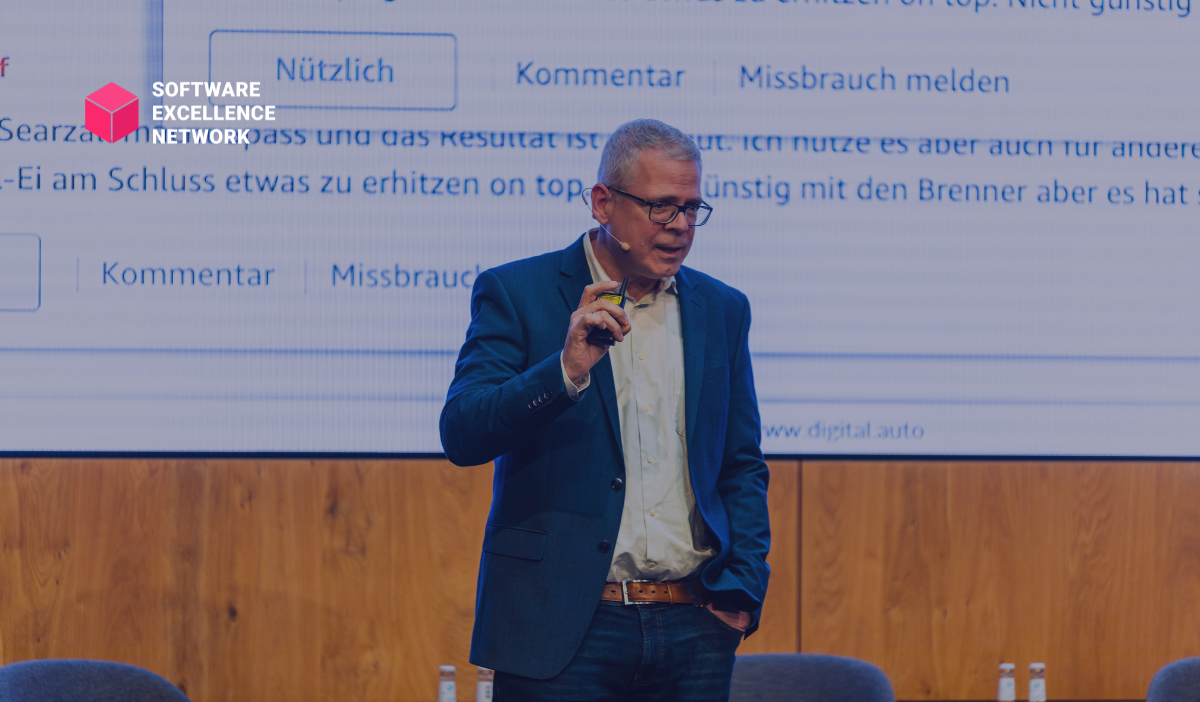
Imagine a world where cars are as customizable, upgradable, and interconnected as smartphones. This isn’t a far-off dream; it’s the reality being shaped by software-defined vehicles (SDVs). At the Beyond the Engine summit, Prof. Dr. Dirk Slama of Bosch eloquently outlined how the automotive industry can cut through its most daunting challenges to embrace a digital-first future. His insights shed light on a revolution not just for vehicles but for how we think about innovation and collaboration.
But the implications of Slama’s ideas stretch far beyond the confines of his speech. They call for a bold rethinking of the automotive ecosystem—a shift from rigid, siloed systems to agile, collaborative networks that prioritize adaptability and user-centric design. 
In the automotive world, safety isn’t just a priority—it’s the foundation. As Slama humorously put it, there’s a world of difference between integrating Angry Birds into a car and integrating an airbag system. The latter demands “first-time-right” precision, where even the smallest error can have catastrophic consequences.
This perfectionism, however, comes at a cost. Legacy processes, often rooted in the traditional V-Model of development, create bottlenecks that slow innovation to a crawl. Integrating new systems, testing them across multiple suppliers, and ensuring compliance with safety standards can take years. The result is what Slama aptly described as “integration hell.”
To break free, the automotive industry must embrace imperfection—not in safety-critical systems, but in how it approaches innovation. Digital-first strategies enable rapid experimentation and iteration, where prototypes can be tested and refined in a fraction of the time required by traditional methods.
At the heart of Slama’s vision is a deceptively simple idea: decoupling. By breaking down complex systems into modular, loosely coupled components, automakers can achieve a level of flexibility that was previously unimaginable.
Consider the analogy of a bento box, where each dish is neatly compartmentalized. In software terms, this means designing systems where individual components—whether an API for opening a car door or a cloud-based diagnostic tool—can be developed, tested, and deployed independently. This approach not only streamlines development but also makes it easier to adapt systems to changing needs.
Decoupling isn’t just a technical solution; it’s a cultural one. It requires teams to rethink how they collaborate, moving away from hierarchical structures toward cross-functional, end-to-end ownership of processes. Engineers, software developers, and safety experts must work in harmony, aligning their goals while respecting the unique challenges of their domains.
Slama’s reference to internet pioneers and smartphone ecosystems highlights a critical lesson: abstraction is power. In the smartphone world, developers don’t need to understand the intricate workings of accelerometers or gyroscopes to create apps that use them. Instead, they rely on APIs and hardware abstraction layers to translate complex functionalities into simple, reusable building blocks.
For automakers, this approach could unlock unprecedented creativity. Imagine a car where every feature—climate control, seat adjustment, navigation—is accessible through a suite of well-defined APIs. This would allow developers to create custom apps tailored to specific use cases, from fleet management to personalized driver experiences.
Slama’s dual strategies—shift left and shift north—offer a blueprint for addressing two of the automotive industry’s biggest challenges: cost and complexity.
The ideas presented by Prof. Slama aren’t confined to the automotive industry. They speak to a broader shift in how we approach technology and innovation. The principles of decoupling, abstraction, and continuous integration are just as relevant to industries like healthcare, energy, and manufacturing.
For instance, a hospital’s IT system could benefit from the same modular architecture as an SDV, allowing for seamless upgrades and integration of new medical technologies. Similarly, energy grids could use APIs to connect renewable energy sources, storage systems, and consumer devices into a cohesive, adaptable network.
The SDV revolution is part of a larger trend toward connected, user-centric systems that prioritize adaptability over rigidity. By adopting these principles, industries can create ecosystems that are not only more efficient but also more resilient in the face of change.
Prof. Slama’s vision is both ambitious and achievable. It challenges automakers—and the wider world of technology—to embrace a new way of thinking. Digital-first strategies are more than just tools; they’re a mindset that prioritizes collaboration, flexibility, and the relentless pursuit of better user experiences.
The journey to software-defined vehicles isn’t without its challenges. But as Slama so eloquently demonstrated, the tools to overcome these challenges are already within our grasp. It’s up to us to use them, to cut through the Gordian knot, and to build a future defined not by its limitations but by its possibilities.
You can download all of Prof. Dr. Slama's slides and watch the full presentation, as well as the masterclasses of other automotive IT executives by visiting this landing page dedicated to the Beyond the Engine executive exchange.
About the Software Excellence Network
The Software Excellence Network is a collaborative community uniting top IT executives, academic leaders, and industry experts to tackle the most pressing challenges in corporate software development. Through open dialogue, knowledge exchange, and thought leadership events like the Beyond the Engine executive exchange, the network fosters innovation, promotes best practices, and inspires transformative solutions. Learn more about how the Software Excellence Network is shaping the future of software engineering.
This article provides a summary of Prof. Dr. Dirk Slama's masterclass and highlights key insights shared during his presentation. For the full context, complete remarks, and detailed visuals, we encourage readers to watch the presentation and download the accompanying slides. If you have any questions or concerns, we encourage you to reach out to us directly.
These Stories on Events/Webinars
August-Bebel-Str. 26-53
14482 Potsdam, Germany
hello@seerene.com
+49 (0) 331 706 234 0
Generative AI Seerene GmbH
August-Bebel-Str. 26-53
14482 Potsdam, Germany
hello@seerene.com
+49 331 7062340